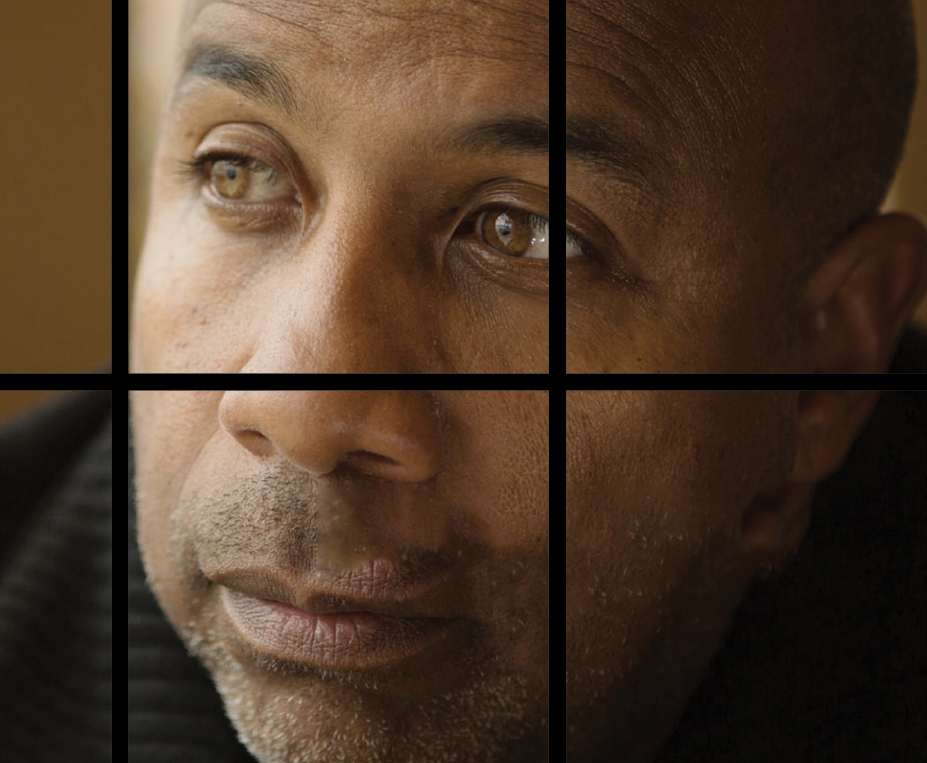
Extreme Risk Protection Order:
A Tool To Save Lives
Extreme Risk Protection Order laws (ERPO) help prevent gun deaths and protect communities. They provide a civil process allowing law enforcement and, depending on the state, family members, medical professionals, and other groups to petition a court to temporarily prohibit someone at risk of harming themselves or others from purchasing and possessing firearms.
Twenty-one states and the District of Columbia have ERPO laws and their successful implementation requires the collaboration of a variety of stakeholders, including law enforcement, prosecutors, attorneys, judicial officers, clinicians, educators, and more. A new training and technical assistance program through the Johns Hopkins Center for Gun Violence Solutions will support this implementation. As of March 2024, the content on this website is not being updated to reflect changes in the law.
For the most up to date information, please visit the Johns Hopkins ERPO Resource Center at www.erpo.org.
-
ERPO Laws: An Introduction
ERPO Laws: An Introduction
Preventing Gun Violence & Saving Lives
“When I look at the landscape of gun violence prevention policy in this country and the possibilities for progress, I’m very hopeful," says researcher Shannon Frattaroli, associate professor at Johns Hopkins Bloomberg School of Public Health. "By bringing science to policy, we’re getting good laws that are making a difference in our communities every day."
19 states & DChave enacted ERPO laws so far.
-
What is an ERPO?
What is an ERPO?
An ERPO is a civil order issued by a court when someone is at risk of violence to self (including suicide) or others. A person who is subject to an ERPO cannot purchase or possess guns while the order is in place.
1 Swanson, J. W., Norko, M. A., Lin, H. J., Alanis-Hirsch, K., Frisman, L. K., Baranoski, M. V., et al. (2017). Implementation and effectiveness of Connecticut’s risk-based gun removal law: Does it prevent suicides? Law and Contemporary Problems. 80(2).
1 lifesaved for every 10-20 ERPOs issued. 1
-
Who can file an ERPO?
Who can file an ERPO?
Laws vary in each state; generally, petitioners can include:
- Family, including someone related by blood, marriage, or adoption
- Dating partners
- People who have a child in common
- People who are living together
- Legal guardian
- Law enforcement
- Health care professional
- School administrator
- State's attorney
- District attorney
- Attorney within the office of the attorney general
1 Centers for Disease Control and Prevention, National Center for Health Statistics. WONDER Online Database, 1999-2017. Available: https://wonder.cdc.gov/ucd-icd10.html.
61%Percent of gun deaths that are suicides, more than 60 a day. 1
-
What Clinicians Need to Know
What Clinicians Need to Know
Certain health professionals can petition for ERPOs in some states.
This video is a Continuing Medical Education (CME) activity intended for clinicians interested in learning more about ERPOs. Simulated encounters modeling counseling strategies illustrate the process for petitioning and their potential applications.
However, information provided in this CME course is useful for a much broader audience. The utility of this content is applicable for all medical, mental health, and public health professionals in the United States engaged in gun violence prevention work across all areas of research, policy, and practice.
Learn how to:
- Define and describe ERPOs.
- Describe examples of different applications used for ERPOs.
- Compare and contrast the process by which a clinician can petition for an ERPO in select states.
Clinicians Seeking CME Credit can register for this course.
1. Frattaroli S, Hoops K, Irvin NA, et al. Assessment of Physician Self-reported Knowledge and Use of Maryland’s Extreme Risk Protection Order Law. JAMA Netw Open. 2019;2(12):e1918037. doi:10.1001/jamanetworkopen.2019.18037
70%Of respondents in a recent survey of physicians described themselves as “not at all familiar” with ERPOs. 1
90%Indicated in the same survey – after learning more about ERPOs – that they encounter patients who might be helped by ERPOs at least a few times each year. 1
-
Why are ERPOs needed?
Why are ERPOs needed?
State laws often do not provide a clear legal authority to restrict access to guns before a tragedy occurs, even when it is clear that an individual is at risk of harm to self (including suicide) or others. ERPO laws provide a legal means, using a civil process, to prevent tragedies.
1 Centers for Disease Control and Prevention, National Center for Health Statistics. WONDER Online Database, 1999-2017. Available: Available: http://wonder.cdc.gov/ucd-icd10.html.
109Americans killed every day by firearms in 2017. 1
-
How to obtain an ERPO
How to obtain an ERPO
ERPO Petition and Hearing Process
WHO?
Depending on the state's ERPO law, family members, dating partners, household members, law enforcement, health professionals, state's attorneys, district attorneys, attorneys in the office of the attorney general, and school administrators may petition a court to temporarily restrict a person's access to firearms through a civil process.HOW?
By filing a petition with the court that describes the basis for the belief that the person is at risk of harming themself (including suicide) or others. Depending on the state, under certain circumstances this may be done telephonically.WHAT?
A judge will process a completed petition and may issue a temporary order, if requested, and provide a date for a final ERPO hearing. If the respondent to the order received notice or is present and had an opportunity to be heard, a judge may issue a final order.THEN?
If a temporary order was issued, a final ERPO hearing, which may also include the respondent and witnesses, will be held. The judge will determine whether to issue a final ERPO, which will last for a set amount of time, typically one year.State laws vary. Read more.
1 Azrael D & Miller M (2016). Reducing suicide without affecting underlying mental health: Theoretical underpinnings and a review of the evidence base linking the availability of lethal means and suicide. In The International Handbook of Suicide Prevention, 2nd Ed (pp. 637-662).
2 Anglemyer A, Horvath T, & Rutherford G (2014). The accessibility of firearms and risk for suicide and homicide victimization among household members: A systematic review and meta analysis. Annals of Internal Medicine.
9 in 10Firearm suicide attempts are fatal. Firearms are among the most lethal suicide attempt methods. 1
3xAccess to a firearm in the home increases the odds of suicide more than three-fold. 2
-
After an ERPO is Issued
After an ERPO is Issued
Service and Dispossession of Firearms
- Guns prohibited. After an ERPO is issued by a court, law enforcement will serve the order to the person named, explain that guns cannot be purchased or possessed, and explain the dispossession requirements.
- Purchases barred. The order will be added as a prohibition to the background check database law enforcement uses when anyone applies to buy a gun.
State laws vary. Read more.
1 Swanson, J. W., Norko, M. A., Lin, H. J., Alanis-Hirsch, K., Frisman, L. K., Baranoski, M. V., et al. (2017). Implementation and effectiveness of Connecticut’s risk-based gun removal law: Does it prevent suicides? Law and Contemporary Problems. 80(2)
99%of Connecticut ERPO cases in which police found firearms. 1
7Average number of guns in Connecticut removed per warrant. 1
-
When an ERPO ends
When an ERPO ends
Returning Firearms
Once the Order is terminated or expires, the respondent can request the return of their guns. Law enforcement will run a background check to make sure that the respondent is not prohibited from possessing firearms for any other reason and then return the firearm(s).
State laws vary. Read more.
1 Owens, D., Horrocks, J., & House, A. (2002). Fatal and non-fatal repetition of self-harm. Systematic review. British Journal of Psychiatry, 181(3), 193–199.
2 Swanson, J. W., Norko, M. A., Lin, H. J., Alanis-Hirsch, K., Frisman, L. K., Baranoski, M. V., et al. (2017). Implementation and effectiveness of Connecticut’s risk-based gun removal law: Does it prevent suicides? Law and Contemporary Problems. 80(2), 101-128.
90%of people who survive a suicide attempt do not ultimately die by suicide. 1
Nearly 1/3Number of respondents in Connecticut who received mental health treatment in the public behavioral health system after an ERPO. 2
As states continue to adopt ERPO laws, implementers on-the-ground have gained valuable experience in using them. This space will showcase those lessons learned: best practices, refinements or revisions to increase the law’s effectiveness, and practical advice for law enforcement, health professionals, family members and loved ones who are engaging with these laws in real time.
Resource Library
Browse all of our materials for background on your state’s laws, best practices, advice and answers to your ERPO-related questions.
Selected Reading
Our experts curate relevant news articles on ERPO-related issues.
About This Project
A Focus on Implementation
Effective gun violence prevention strategies are one of our nation’s most pressing needs in the 21st century. While many questions remain about the causes and consequences of gun violence and how to prevent it, evidence-informed policies with the potential to save lives do exist.
State laws that provide for Extreme Risk Protection Orders (also known as Gun Violence Restraining Orders and Risk Warrants) are one example of a promising, evidence-informed gun violence prevention policy.
In 2013, the Consortium for Risk-Based Firearm Policy responded to the Sandy Hook massacre by reviewing the evidence on risk factors for gun violence and developing a set of recommendations for action that would impact all forms of gun violence. Included in those recommendations was a call for states to pass a new type of policy to allow law enforcement and family members to petition civil courts for an Extreme Risk Protection Order (ERPO) when someone is behaving dangerously and at risk of self-harm (suicide) or harming others.
As detailed in a widely disseminated report, the Consortium developed the ERPO recommendation based on the Domestic Violence Restraining Order policies in place in all 50 states, and laws in Connecticut and Indiana that provide law enforcement with a mechanism to temporarily remove guns when an individual is responding dangerously. Through our work with the Consortium, we have met with stakeholders and policymakers in states across the country to discuss ERPO. As of April 16, 2020, seven years since the Consortium released its report, 19 states and the District of Columbia have passed new ERPO laws. Dozens more states have introduced ERPO bills.
With many laws in place, and several additional states poised to enact ERPO laws, there is a need for information, technical assistance, and support for implementing ERPO laws. We created this project to address that need. This website is designed as a central resource for ERPO implementers. Information about different state ERPO laws can be found here, along with ERPO research, media coverage, training resources, and advice from law enforcement professionals who are leading the nation’s ERPO implementation efforts. We even have space for implementers to blog about their experiences. We will be updating this site often as new information and developments in ERPO implementation evolve. Thank you for your interest in this exciting new gun violence prevention strategy.
The Researchers

Associate Professor,
Johns Hopkins Bloomberg School of Public Health

Co-Director,
Johns Hopkins Bloomberg School of Public Health, Center for Gun Violence Solutions


